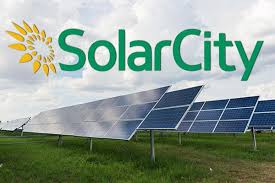Tesla’s domestic solar company SolarCity is to be heavily downsized “in line” with a 9% staff cut across the board for the cash-burning company. Approximately a dozen installation facilities and a retail partnership with Home Depot will be closing as it appears Tesla will focus more on producing its Model 3 electric cars, with solar taking somewhat of a back seat for the immediate future.
Tesla’s SolarCity to be heavily downsized.

SolarCity, a residential solar business Tesla bought for $2.6 in 2016, will face some significant cuts including the closing down of ~25% of its installation facilities. The Guardian reported that Tesla haven’t announced which locations will close but an “internal email” advised that the sites which may be closed are located in California, Maryland, New Jersey, Texas, New York, New Hampshire, Connecticut, Arizona and Delaware.
They also fired “dozens” of staffers at solar call centers in Nevada and Utah – so what does this mean for Tesla’s solar future? Has the enigmatic Elon Musk (who owned around 20% of Tesla and SolarCity when the takeover occurred) bitten off more than he can chew with regards to the world’s energy future? You certainly can’t fault his vision – but can he keep all the balls in the air while burning $8,000 a minute?
Tesla’s February Q1 report noted that sales of solar panels “have declined over the last few quarters due in large part to our strategic decision to shutter certain sales channels and market segments.”
According to the report, Tesla deployed 76 megawatts of solar systems during the quarter, or 62 percent less than what SolarCity was deploying in early 2016. It looks like these numbers are set to sink even lower.
The news of Tesla’s solar closures comes hot on the heels of the company initiating legal action against a former Gigafactory worker turned saboteur/whistleblower (depends on which side you’d like to take) – so it’s been a very trying week to add to a fairly trying 12 months for the cash strapped company.
Would Tesla’s solar enterprise be better off being run separately? We’ll find out soon enough, but fingers crossed in the meantime.




